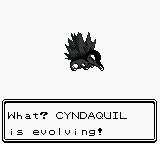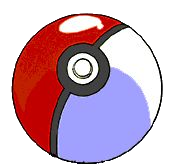Pokémon isn't just about defeating the Elite Four, Red and beating the game—it's also about raising your chosen Pokémon into a powerful fighting force. Whether it's for your own personal satisfaction or to fight your friends, you'll want your Pokémon to be the best they can be. To do that, you'll need to start planning early.
Go for the stats[edit | edit source]
Any two Totodiles will learn the same exact skills at the same levels, but they may have significantly different strengths. Start a game, pick your Starter, check out his stats, and then restart and pick the same Pokémon again. Odds are that at least one or two of his stats will be a bit higher or lower than they were before. So sometimes it pays to catch a wide variety of the same Pokémon, since some will be faster, some will simply be weaker in all categories. If you're trying to raise a champion, make sure you're starting with champion material.
What the stats mean[edit | edit source]
HP (Hit Points)[edit | edit source]
This is the amount of damage your Pokémon can take before it faints. Obviously, the more the better, but don't overestimate the importance of HP. Blissey has more HP than any other Pokémon, but with a low Defense stat, many Pokémon can still knock it out in a few shots.
Attack[edit | edit source]
This stat affects the amount of damage your Pokémon deal when they use attacks of the types Normal, Fighting, Flying, Poison, Ground, Rock, Bug, and Ghost. It's important to remember that your Attack score has no bearing on your Special attacks (Fire, Water, Psychic, etc.), so if your Pokémon uses mainly those types of attack, its Attack barely matters at all. This is the stat to look at for Normal, Flying and Fighting-type Pokémon (like attacking powerhouse Ursaring), as well as the other types mentioned above.
Defense[edit | edit source]
This is usually more important than HP. Sudowoodo may not have a lot of health, but with a very high Defense score, most regular attacks will barely scratch its shell. However, a high Defense won't protect it from Special-based attacks, especially if they have an advantage against its type. No amount of Defense will save Sudowooodo from a Hydro Pump attack.
Speed[edit | edit source]
Speed is more important than you might think. Pokémon like Kadabra have terrible Defense, but with their lightning Speed ensuring they always go first, they can K.O. most foes before they even get a chance to fight back.
Special Attack[edit | edit source]
This important stat determines how much damage you'll do with Special attacks (Fire, Water, Ice, Electric, Grass, and Psychic).
The difference between Attack types and Special Attack types is important, and is a key to understanding the worth of each Pokémon. Krabby may look like a great Pokémon with a wide variety of Special attacks, but with a pathetically low Special Attack, they'll never do as much damage as its basic Normal-type attacks. Octillery, on the other hand, has nothing but Special attacks, and a through-the-roof Special Attack to make good use of them.
Special Defense[edit | edit source]
This stat determines how much damage you'll take from opponents' Special attacks.
Get 'em while they're young[edit | edit source]
When you're catching a Pokémon you plan to use in battle, catch it as low a level as possible. Without the supervision of a trainer, wild Pokémon gain fewer stat points as they level up and may choose moves you don't want. So a level 20 Jigglypuff that you raised from level 5 will be much stronger than a level 20 Jigglypuff in the wild. Wild Pokémon may also have lost useful skills as they grow--a wild Metapod only knows how to use Harden, but one you raised from a Caterpie will also remember how to use Tackle and String Shot.
When to Evolve[edit | edit source]

Remember that you can always prevent a Pokémon from evolving by hitting (or giving it an everstone) during the evolution screen. However, when a Pokémon is traded or exposed to a Evolutionary Stone, you cannot cancel the evolution. The reason you would want to do this is so that your Pokémon can learn skills earlier. For example, a Chikorita will learn Solarbeam at level 50, five levels sooner than a Bayleef and eleven levels sooner than a Meganium. However, evolving gets you an immediate stat boost. It is generally in your best interest to evolve a Pokémon that evolves by trading or levelling up immediately.
As mentioned here, Pokémon who evolve via Evolutionary Stones should never be evolved until they've learned all the moves you want on them, although their evolved forms will usually learn one strong move their previous form didn't, if they learn any at all. Pokémon that evolve through trading learn the same skills at the same pace they would have if you didn't trade them, so evolve them immediately. Also, because they are traded, they gain experience a lot faster than normal, However, if you trade them away and then trade back, so that you end up with the Pokémon you originally had, you will not get the bonus.
Picking the right skills[edit | edit source]
Pokémon can naturally learn up to 12 skills, and with TMs and HMs, some can learn nearly 50! The only problem is that they can only know four at once... And when they forget one, it's gone forever. So plan carefully which skills you want your Pokémon to have. Check the Skills section for detailed descriptions of each skill, so you don't accidentally cripple your Pokémon by replacing a good skill with something bad. A few pointers:
- Always have at least two techniques that are capable of dealing damage. The ability to lower your opponent's stats doesn't mean much when you don't have the firepower to knock them out afterwards.
- Carefully check the amount of PP each skill has. No matter how powerful the attacks are, a Pokémon with two attacks that have only five PP each is a Pokémon who will be totally spent after four or five fights. For example, let's say you have a Raichu that can learn Thunder or Thunderbolt. Thunder's power makes it sound more appealing, but Thunder's low accuracy and PP make Thunderbolt a good alternative as well.
- Stay away from novelty skills like Whirlwind or Teleport. Ending a wild Pokémon battle whenever you want is nice, but it's not worth wasting a valuable skill set.
Using TMs and HMs[edit | edit source]
In addition to the skills they learn as they gain levels, each Pokémon (save for a few like Magikarp and Ditto) can learn additional skills from the TMs and HMs you find as you play the game. With the exception of a few that can be purchased in the Goldenrod and Celadon City Department Stores, there exists only one copy of each TM in the game, so you'll want to think about it carefully before you teach one to a Pokémon. First, check the internet to make sure they won't learn that skill anyway. Second, only teach Special attacks to Pokémon with high Special Attack, and Physical attacks to Pokémon with high Attack scores. Otherwise, you'll be wasting a TM on a Pokémon that can't exploit its full potential. And while it's nice to, say, teach a Normal Pokémon a Ground-type attack, you may get an Ground-type Pokémon (like Sandshrew) that doesn't learn any Ground-type attacks itself. Since they'll get the 50% bonus for using an attack of their type, the TM would be better spent on them.
HMs are different in many ways. One HM can teach its skill to as many Pokémon as you want, but the catch is that those Pokémon can't forget it until much later in the game. This isn't so bad when they're good HM's; even late in the game, Strength is a strong Normal-type attack, and Surf is one of the best Water attacks in the game (these moves are also necessary to progress in the game). Unfortunately Fly, Flash and Cut are all but useless later on (Although Fly is your best option for something like Xatu that gets no good Flying-type moves), so don't give them to Pokémon you're planning to use for the long run.
Making a Good Team[edit | edit source]
You can gather up to six Pokémon for your team. Since every type of Pokémon has a unique natural advantage over other types, you should assemble six diverse Pokémon. Avoid putting together a team made up of one or few types. Instead, assemble a motley crew like the sample team so you can cover many bases.
- Sample Team
- Totodile, which is a Water-type Pokémon
- Hoothoot, which is a Flying and Normal-type Pokémon
- Geodude, which is a Ground and Rock-type Pokémon
- Gastly, which is a Poison and Ghost-type Pokémon
- Mareep, which is a Electric-type Pokémon
- Machop, which is a Fighting-type Pokémon
The right type at the right time[edit | edit source]
Perhaps each Pokémon's most important attribute is their type. As mentioned before, each Pokémon gets one or two types, like Electric, Psychic, Fighting, Normal, etc. Each type means three things:
- That Pokémon gets a 50% bonus when using a damage-dealing skill that matches one of his types (even for Normal skills)
- That Pokémon is vulnerable to certain attack types (for example, Fire-type Pokémon will take double damage from Water-type attacks).
- That Pokémon is protected from certain attack types (for example, Steel-type Pokémon cannot be damaged by Poison-type attacks, and will take only 1/2 damage from Dark and Normal attacks).
Remember that your Water-type Pokémon only has an advantage against Fire-type opponents if it's using Water-type attacks. Many Pokémon, like Forretress, have types (Bug and Steel) that they never learn any attack for. It's important to remember that types hurt your Pokémon as well as help: while Heracross has a decent Attack stat, it has no powerful Fighting type moves.
As you play, you'll learn which types are good against which other types. Pokémon is like a big game of Rock-Paper-Scissors, but with seventeen different types instead of three.
